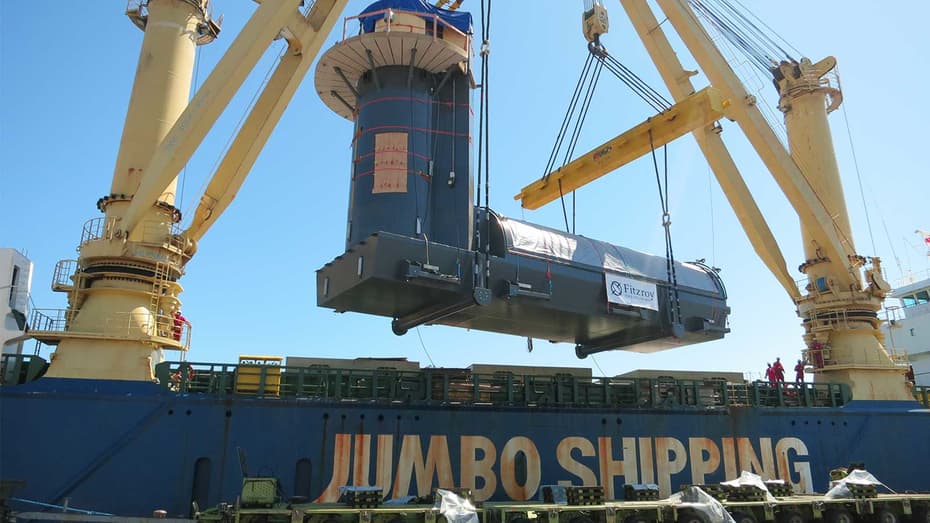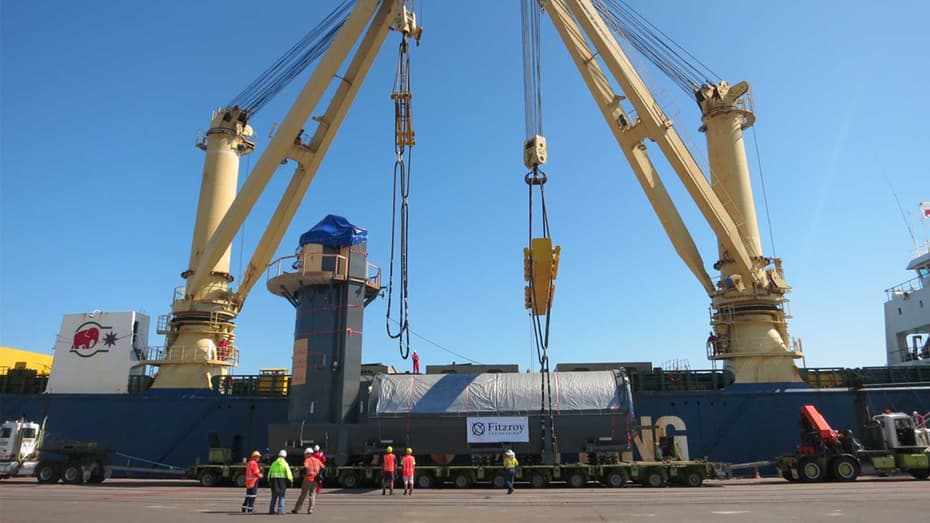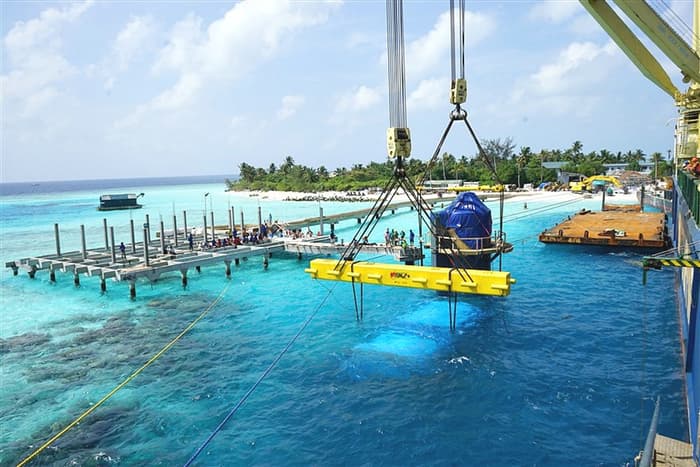
The Hurawalhi restaurant is still under construction, and it has already required a huge amount of logistics to get the structure to the Maldives. The many components of the restaurant were constructed in New Zealand. Since the finished structure will measure about 59 feet across by 16 feet high and weighs 452 tons, it was transported to the Lhaviyani Atoll of the Maldives in pieces. The shipping and logistics firm hired to get the pieces from New Zealand to the Maldives said that just planning for the delivery took 12 months.
It took four trucks to get the trailer-loaded structure across five miles of New Zealand roads. Then the full package was transported by sea to the Maldives, where the restaurant’s steel base and acrylic dome will eventually be situated 19 feet below the surface of the Indian Ocean. The floor of the restaurant will sit atop steel piles that were constructed a year in advance, leading up to the ten months of construction still underway.
Both the Hurawalhi Resort and its underwater restaurant are scheduled to open later this year, so there are a few months left before you can escape to this particular Maldives attraction. Once it does open, the restaurant will have room for 24 underwater guests at a time. Food will be prepared on land, and served to restaurant patrons by way of a nearby jetty that lets staff members access the dining room through a staircase. The Hurawalhi Resort intends to use the underwater chamber as a double duty room by making it available for honeymooners and wedding ceremonies, so all of the Maldives’ exciting events can happen in the world’s largest underwater restaurant space.






